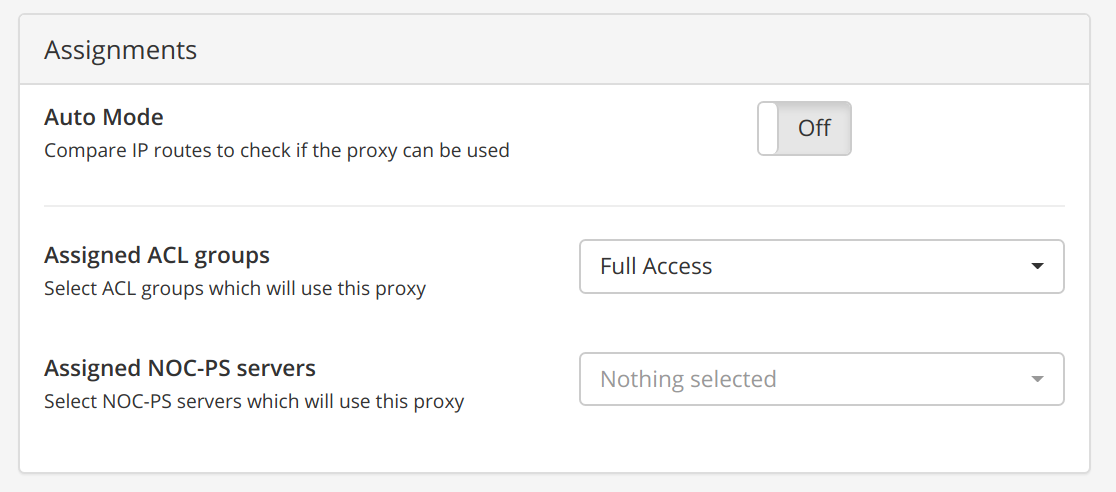The module offers the possibility to install multiple IPMI/KVM proxies. For example, if several NOC-PS instances are operated across different data centers, then you can use the proxy assignments to assign which proxy is responsible for which NOC-PS instance. But even without multiple locations, there might be situations where you want to run multiple proxies, for example because IPMI is located in different, separated VLANs.
There are various configuration options to determine when which proxy should be used:
- Auto Mode
- By ACL groups
- By NOC-PS server
Each of the options can be used in parallel, but does not have to be set. For example, the assignment can be done based on the NOC-PS server only, or based on the NOC-PS server and the ACL group. The options are "and" conditions. This means that if a value is set for NOC-PS server and a value is set for ACL groups, both conditions must be true for the proxy to be used by the system.
Order of the Proxy Election
ACL and NOC-PS assignments are preferred over Auto Mode. The module first checks if there is a specific assignment, and if not the Auto Mode (if enabled) is used to find the appropriate proxy server. If there is no match, the default proxy server is used, which is defined on the overview page.
Explanation of Auto Mode
Auto Mode automatically tries to find out which proxy can be used. For this purpose the IP route into the IPMI network is checked on each proxy. The first proxy that has a suitable IP route is used as a proxy. If a different subnet is used for each IPMI network, it should be sufficient to enable only this option without further assignment of ACL groups or NOC-PS servers. However, if you know exactly which proxy should be used under which circumstances, it is better to create a fixed assignment for performance reasons. Depending on the number of proxies, it can take a few seconds for the module to find the right proxy in auto mode.
Verify proxy election
Please see following article to test the proxy election: Test proxy election
